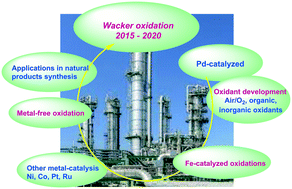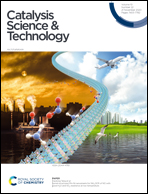Recent advances in Wacker oxidation: from conventional to modern variants and applications
Abstract
This review emphasizes the recent developments in the Wacker oxidation process from its conventional form to more efficient, economical, and greener methods established in the last five years (2015–2020). The Wacker oxidation process involves the synthesis of aldehyde or methyl ketone from terminal olefins following the Markovnikov or anti-Markonikov addition of water using palladium-based catalysts. The development of catalysts from Pd to other metals and the choice of more eco-friendly and economical oxidants has been investigated recently, which promises a new avenue for the synthesis of more functionalized ketones and aldehydes. The extension to aza-Wacker-type oxidation is a new dimension in this field. The effect of substituents on the regioselectivity of the reaction has been well illustrated. The choice of various secondary oxidants has been focused on in this review. The wide applicability of newer modes along with the conventional conditions of the Wacker oxidation process for the synthesis of natural products and valuable compounds is another recent dimension that has been covered to validate the potential of this well-known reaction.



 Please wait while we load your content...
Please wait while we load your content...